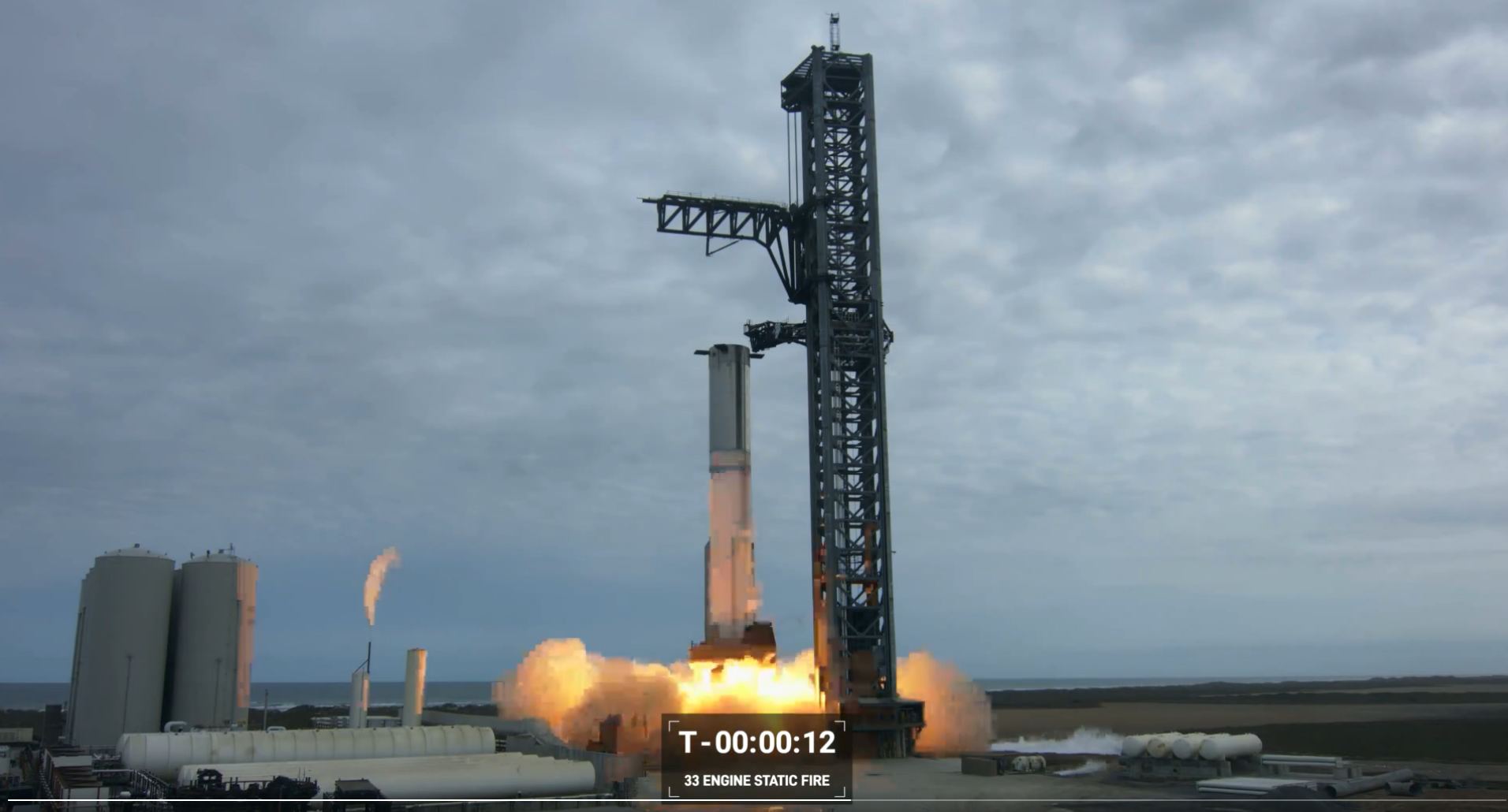Another day, another static fire test, another milestone on the road to space! For months, crews at the SpaceX Starbase near Boca Chica, Texas, have been conducting static fire tests of the B7 Super Heavy booster prototype. In previous tests, the ground crews test-fired 7 to 14 of the B7s Raptor 2 engines for periods lasting 7 to 13 seconds. Today, the crews prepped the BN7 Booster for the first static fire test, where all thirty-three engines would fire simultaneously. While two of its Raptors did not fire, the test was a success and set a new record for the amount of thrust produced in a single booster fire.
The event, live-streamed by NASA Spaceflight and several media outlets, kicked off with the announcement of a road closure that would last from 8:00 am to 08:00 pm CST (06:00 am to 06:00 pm PST). An overpressure notice was also issued to the residents of Boca Chica village, alerting residents to the possibility that failure might result in shocks that could shatter windows. The remainder of the morning consisted of the B7 venting and being fueled with liquid oxygen and methane until frost formed on its exterior.
At 3:13:53 pm CST (1:13:53 pm PST), the booster’s engines were ignited and burned for over five seconds. As the engines cut out, the massive cloud of mist slowly dissipated, revealing that the B7 and the launch stand were still intact. According to SpaceX, a successful test would have generated over 7.9 million kg (17.5 million lbs) of thrust, making the B7 the most powerful booster ever tested. In comparison, NASA’s Space Launch System (SLS) generated about 3.99 million kg (8.8 million lbs) during its inaugural launch on November 16th, 2022.
As part of NASA’s Artemis Program, this mission (Artemis I) saw the heavy launch system successfully send an uncrewed Orion spacecraft on a circumlunar flight. This flight, and the crewed Artemis II mission, will prepare NASA and astronauts for a crewed flight in 2025 (Artemis III) that will land astronauts on the Moon for the first time since the Apollo Era. The flight was also notable for breaking all previous records for distance traveled from Earth. While not all the engines fired, this test set a new record for thrust and previews what the fully-stacked Starship will be capable of.
SpaceX immediately took to Twitter to announce success and stated that the engines had fired for a “Full duration.” Musk took to Twitter shortly after and shared the results from the ground team, stating that 31 engines fired since one engine was shut off before ignition was attempted while a second shut down automatically. Still, Musk emphasized that the successful firing of 31 Raptor engines were “still enough engines to reach orbit!”
This was actually good news since it demonstrates that the Starship can suffer individual engine failures and still successfully launch. The successful test also places SpaceX closer to a possible orbital launch by March. It is unclear at this time if SpaceX will attempt to build on this success by conducting that long-awaited flight or attempt another static fire with all 33 Raptor engines. Time will tell, and the next month or so will be an exciting time for SpaceX and fans of commercial space flight.
After a bit of a lull, the Starship is back on track and set to become the most powerful launch system ever built!


I Love this SpaceX development all out in the open? No closed doors like Blue Origine. But I root for them to, but I know nothing at all about them since they hide it away. Even if Elon blunders time predictions on a large scale the development is staggering fast. Landing on a barge in the middle of the Atlantic is Normal now.?